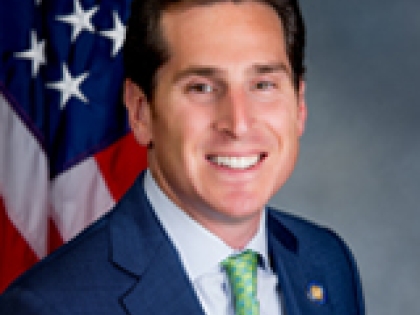
Fiscally challenged MTA plans to add hundreds of workers, including on LIRR
The MTA is facing criticism for a plan to add hundreds of jobs — many of them at the Long Island Rail Road — while considering raising fares and laying off thousands of workers to fill a pandemic-related budget shortfall expected to reach more than $10 billion next year.
The nonprofit Citizens Budget Commission, a fiscal watchdog, issued a report questioning the rationale of the agency's plan to add a half-billion dollars in labor costs ahead of a special Wednesday meeting, where the Metropolitan Transportation Authority Board will discuss how it will address a deficit expected to reach $10.3 billion by the end of 2021.
The commission, during an Aug. 14 webinar, criticized the MTA’s most recent financial update, released in July, that included plans to add 776 positions from February 2020 through July 2021. The jobs, along with a projected $50 million increase in overtime, would bring the MTA’s annual labor costs to $10.9 billion by July 2021, as compared with $10.4 billion in February.
“It’s concerning that, with the MTA’s weak financial picture, its financial plan includes increases in the base head count and overtime,” said Denise Richardson, vice president of research for the Citizens Budget Commission. “The MTA simply can’t afford additional head count in this current fiscal environment.”
Although the MTA has enacted a hiring freeze on nonessential positions, spokesman Aaron Donovan acknowledged the agency recently experienced an unexpected high turnover rate in operational jobs and is looking to fill some of them. Even with the additional hiring, the total number of MTA employees — about 74,000 — will still be about 2,000 fewer than a year ago, Donovan said.
The MTA also said that of the jobs being created, not all will be filled. According to MTA financial documents, 111 positions are being created at the LIRR — most of them cleaning jobs related to intensified COVID-19 disinfecting.
MTA officials said growing labor expenses are out of their control, including a 7.8% increase in employee health care costs due to a projected increase in claims and premiums.
Anthony Simon, head of the LIRR’s largest union, defended the advancement of projects for which “tremendous investment has already been made,” but chided the MTA for remaining too management-heavy in its hiring plan.
“Labor has been screaming this for years: Stop hiring more and more managers and consultants and get your house in order,” said Simon, general chairman of the International Association of Sheet Metal, Air, Rail and Transportation Workers. “The essential workforce that is keeping the region moving is the last place they should be seeking savings from.”
The MTA has laid out plans to cut costs by $1.1 billion, partly by placing stricter overtime controls and scaling back on the use of outside consultants. It is facing an unprecedented fiscal crisis brought by the coronavirus, which decimated fare revenues and tax receipts.
“But we cannot cut our way out of the financial crisis. The MTA urgently needs $12 billion in COVID-19 federal emergency relief funding to cover pandemic-caused declines in revenues and subsidies for the remainder of this year and next," MTA chairman Patrick Foye said in a statement. "Without this full amount, all options to reduce operating costs are on the table, including significant service cuts, reductions in force, and out-of-pattern toll and fare increases.”
The Citizens Budget Commission has called on the MTA to consider taking even more dire steps, such as scaling back its planned $55 billion, five-year capital program, to address the most basic maintenance needs and adjusting service levels to reflect reduced demand. LIRR ridership remains at only around 25% of pre-COVID-19 levels.
Danny Pearlstein, spokesman for the Rider Alliance advocacy group, cautioned the MTA against finding savings through service cuts that “could lead to the demise of the transit system as we know it.”
“The entire region depends on a well-functioning transit system,” Pearlstein said. “New York is unique in the country for the breadth and depth of the transit system that we have and, far and away, the extent that we rely on it. The city and the region would be unrecognizable if the MTA were to become a mere shadow of itself.”
Sen. Todd Kaminsky (D-Long Beach) said fare increases also should be off the table as the MTA considers its options, which he said should include reconsidering regular raises for management.
"Rebuilding ridership has to be the number one goal … And raising fares will have the exact opposite impact on that. Cutting service will have the exact opposite impact on that,” Kaminsky said. “The average commuter cannot be the one who bears the brunt of a lot of these changes.”
